39 cfdisk label type
How to Create, Resize and Delete Linux Partitions With Cfdisk - MUO Cfdisk is a command line, text-based graphical tool that allows you to create, delete, and modify disk partitions on your system. Unlike other command line tools, Cfdisk provides an interactive way of managing partitions for beginners. The Cfdisk package comes preinstalled on most of the well known Linux distributions. cfdisk(8) — fdisk — Debian buster — Debian Manpages cfdisk is a curses-based program for partitioning any block device. The default device is /dev/sda . Note that cfdisk provides basic partitioning functionality with a user-friendly interface. If you need advanced features, use fdisk (8) instead.
cfdisk - display or manipulate a disk partition table cfdisk is a curses-based program for partitioning any block device. ... This command may not be available for all partition label types. d Delete the ...

Cfdisk label type
Changing label type in Arch Linux cfdisk - Arch linux Disklabel type: dos Disk identifier 0x3a701490 <**** My question is, why does fdisk show that the disk has a previous ext4 signature even though i removed all signatures on the disk with wipefs** Also why does it say that a partiton table is not recognised, it clearly says on the **Disklabel section that the partition table is a dos one** Solution: cfdisk(8) DESCRIPTION cfdiskis a curses-based program for partitioning any block device. The default device is /dev/sda. Note that cfdiskprovides basic partitioning functionality with a user-friendly interface. If you need advanced features, use fdisk(8)instead. Since version 2.25 cfdisksupports MBR (DOS), cfdisk(8) - Linux manual page - man7.org cfdisk is a curses-based program for partitioning any block The default device is /dev/sda. user-friendly interface. If you need advanced features, use fdisk(8)instead. All disk label changes will remain in memory only, and the disk will be unmodified until you decide to write your changes. Be
Cfdisk label type. sfdisk(8) - Linux manual page - man7.org The default or the current label may be overwritten by the "label: " script header line. The option --label does not force sfdisk to create empty disk label (see the EMPTY DISK LABEL section below). -Y, --label-nested type Force editing of a nested disk label. The primary disk label has to exist already. What to do if the 'select label type' doesn't show up during ... according to the manual of cfdisk, there u just cant (if im right; viewed it on deb10, so things may have changed in newer versions) so u need to choose fdisk in the installer, where p will give u the info about the current label, and g G o or s for gpt sgi dos sun respectively cfdisk - Wikipedia cfdisk is a Linux partition editor, similar to fdisk, ... SGI or SUN disk labels. It also provides information about mount points and general partition information like partition names, types/flags, sizing and UUIDs. If invoked without arguments, cfdisk attempts to read the current partition table from the disk drive and present its findings. ... [SOLVED] set partition label using cfdisk - LinuxQuestions.org Right click the drive or partition you want to edit and select unmount. (If this is the drive you are currently using, then you may have to do all this from within the live CD because you won't be able to unmount a busy drive.) 4. Next right click on the drive or partition you want to edit and select label. 5 Enter the label you want to use and ...
Label type : r/linux4noobs Feb 6, 2020 — I prefer to use cfdisk, but when I start the utility, it gives me option to choose between gpt, dos, sgi, and sun. I don't understand which one ... partition - Changing label type in Arch Linux cfdisk - Unix & Linux ... 1 Answer Sorted by: 0 I've never actually used cfdisk, but I can tell you how to do it with fdisk. Run fdisk -l You should get all of your storage devices. Find the one you want to partition. It should be something like /dev/nvme0n1 or /dev/sda but your knowledge may vary. Once you find it run fdisk . E.x. /fdsik /dev/sda cfdisk command in Linux with examples - GeeksforGeeks cfdisk command is used to create, delete, and modify partitions on a disk device. It displays or manipulates the disk partition table by providing a text-based "graphical" interface. cfdisk /dev/sda Example: After running you get a prompt like this: Choose gpt from the list. Linux Cfdisk Command Help and Examples - Computer Hope This command will exit the program without writing any data to disk. t. Change the filesystem type. By default, new partitions are created as Linux partitions, but since cfdisk can create partitions for other operating systems, change partition type lets you enter the hex value of the filesystem you desire.
cfdisk: cannot set partition as bootable / Newbie Corner / Arch Linux ... Oddly, when I first run cfdisk, it does not ask what type of label type I want to use, as it did when I installed arch in the VM. I have also tried using the gparted live usb to create the partitions but I could not figure how to mark a partition as bootable there either. I am open to either option so long as it works. Any help is appreciated. EFI system partition - ArchWiki EFI system partition on a Master Boot Record partition table is identified by the partition type ID EF.. Choose one of the following methods to create an ESP for a MBR partitioned disk: . fdisk: Create a primary partition with partition type EFI (FAT-12/16/32).; GNU Parted: Create a primary partition with fat32 as the file system type and set the esp flag on it. Linux Fdisk Command and Examples - Computer Hope Disk labels. A BSD/SUN-type disklabel can describe 8 partitions, the third being a "whole disk" partition. Do not start a partition that actually uses its first sector (like a swap partition) at cylinder 0, as that destroys the disklabel. ... The bottom line is that if you use cfdisk or fdisk to change the size of a DOS partition table entry, ... Partitioning - ArchWiki GUID Partition Table (GPT) is a partitioning scheme that is part of the Unified Extensible Firmware Interface specification; it uses globally unique identifiers (GUIDs), or UUIDs in the Linux world, to define partitions and partition types. It is designed to succeed the Master Boot Record partitioning scheme method.
Arch Linux cfdisk asking for disk label type Arch Linux cfdisk asking for disk label type Ask Question Asked 7 years, 7 months ago Modified 7 years, 2 months ago Viewed 40k times 17 I am trying to partition my hard drive I just wiped with dban so that I can install arch linux but when i run cfdisk /dev/sda It says: Select table type gpt dos sgi sun I don't know which to choose. It also says:
cfdisk(8) - Linux manual page - man7.org cfdisk is a curses-based program for partitioning any block The default device is /dev/sda. user-friendly interface. If you need advanced features, use fdisk(8)instead. All disk label changes will remain in memory only, and the disk will be unmodified until you decide to write your changes. Be
cfdisk(8) DESCRIPTION cfdiskis a curses-based program for partitioning any block device. The default device is /dev/sda. Note that cfdiskprovides basic partitioning functionality with a user-friendly interface. If you need advanced features, use fdisk(8)instead. Since version 2.25 cfdisksupports MBR (DOS),
Changing label type in Arch Linux cfdisk - Arch linux Disklabel type: dos Disk identifier 0x3a701490 <**** My question is, why does fdisk show that the disk has a previous ext4 signature even though i removed all signatures on the disk with wipefs** Also why does it say that a partiton table is not recognised, it clearly says on the **Disklabel section that the partition table is a dos one** Solution:


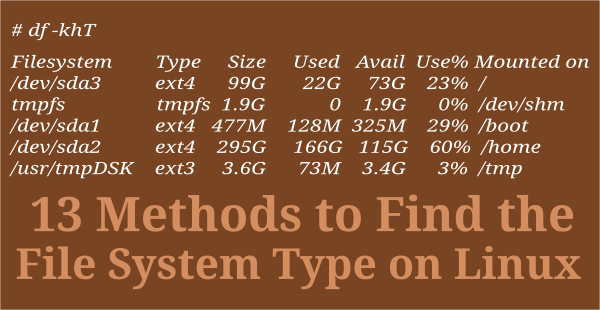


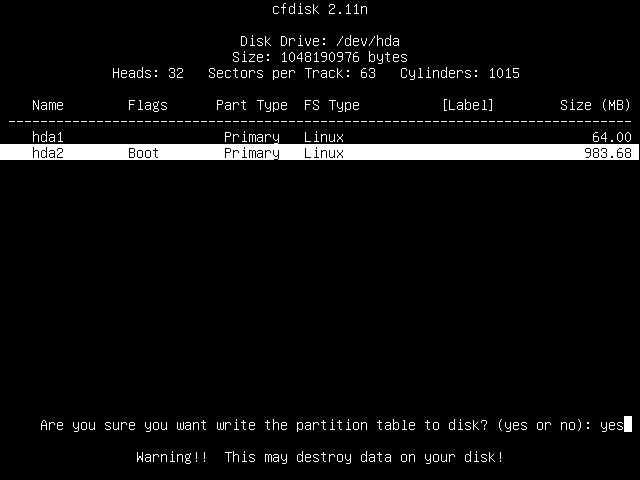




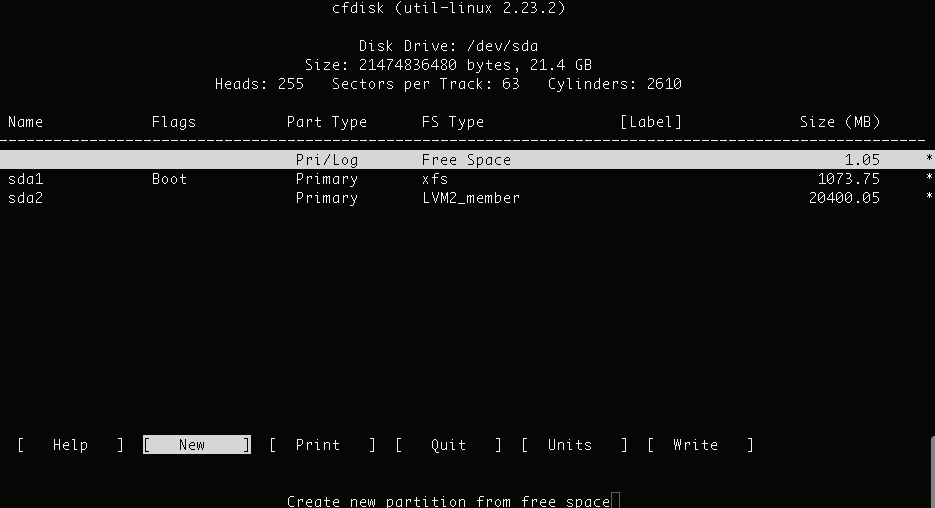
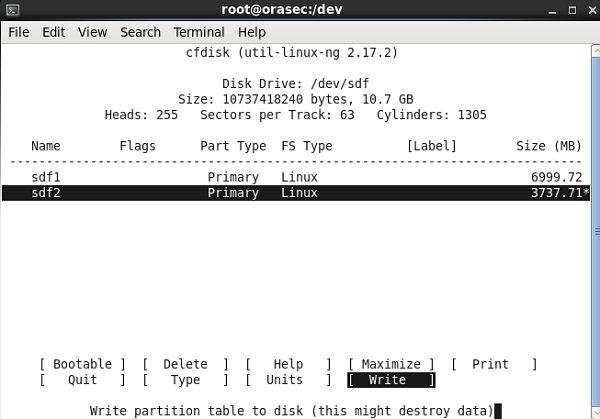
![Chapter 3] Installing Linux](https://www.oreilly.com/openbook/debian/book/figs/deb.0308.gif)

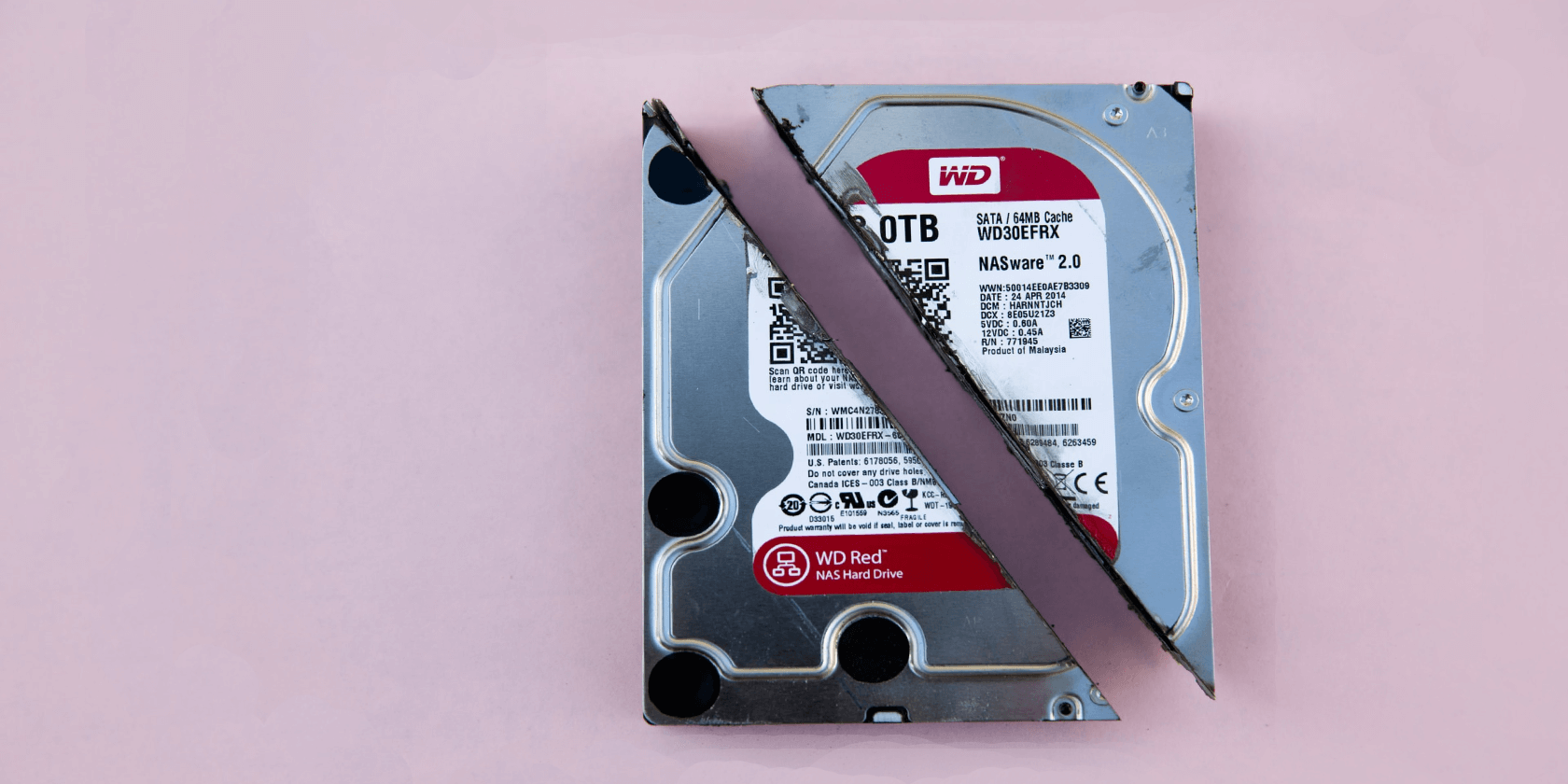
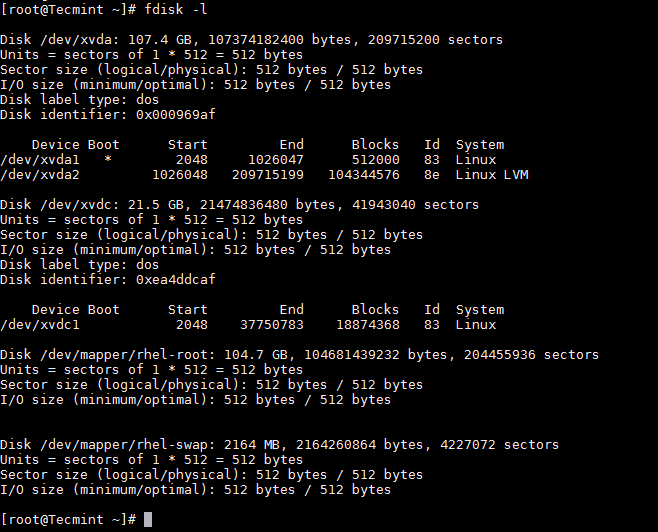
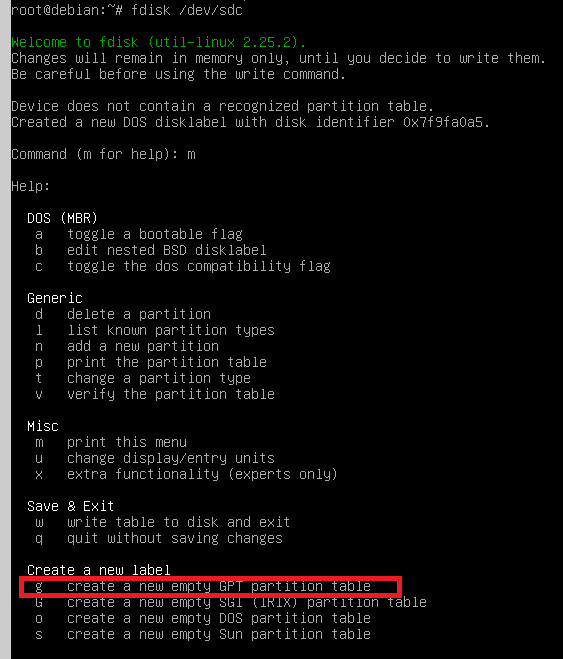


![HowTo] Install ~15 years old Debian Linux — WinWorld](https://forum.winworldpc.com/uploads/editor/zm/nsq5e5o7nw9r.png)




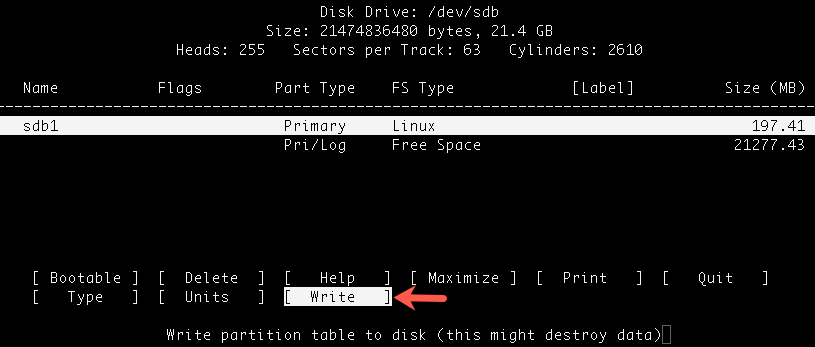



![Partitioning in Linux [cfdisk] | Dushan888- Technology & FOSS ...](https://dushan888.files.wordpress.com/2008/11/44.png)
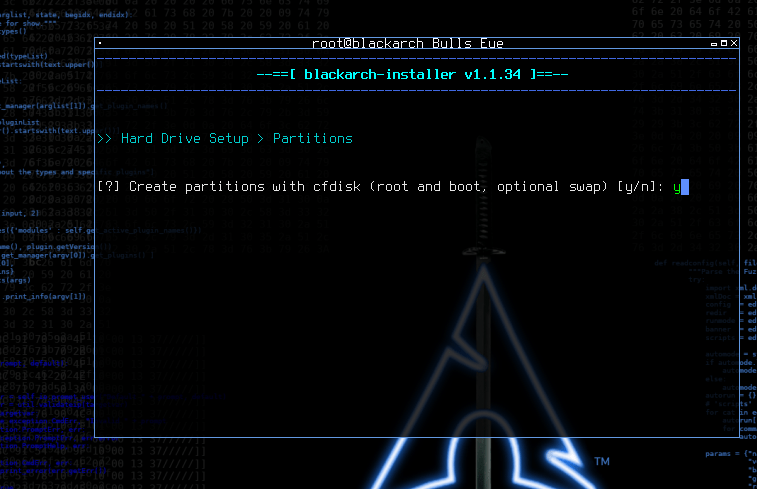



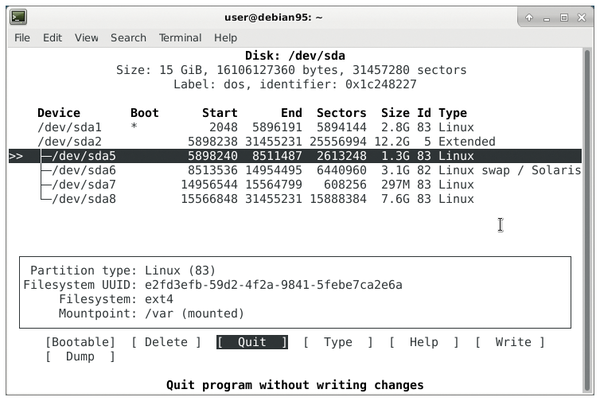
Komentar
Posting Komentar